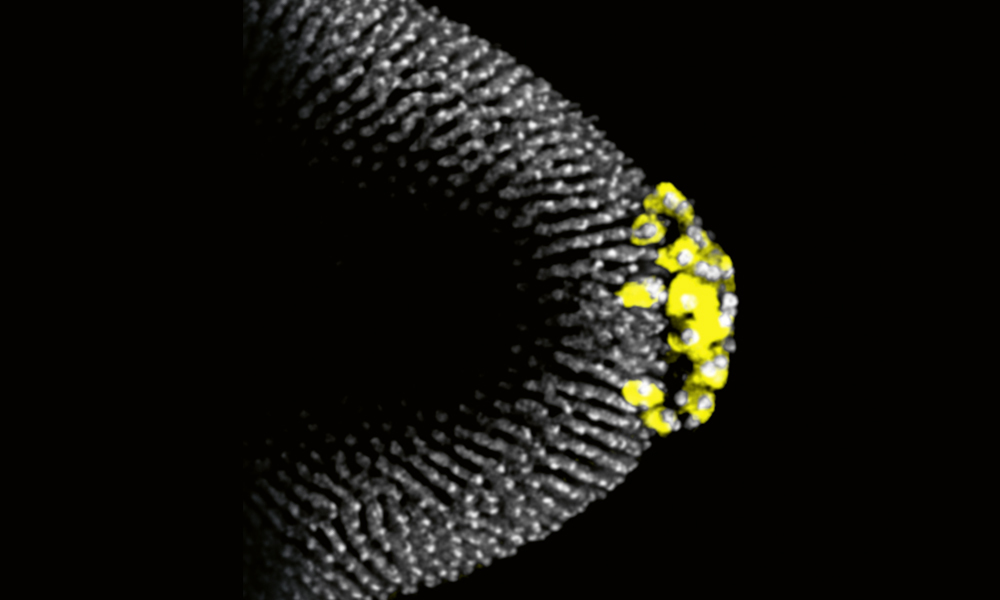
Spotlight: Off to the pole
For a fruit fly embryo to develop correctly, key factors need to get to the right place at the right time – a journey that starts in the developing egg, as seen in this image from the Ephrussi Group at EMBL Heidelberg

(By Michelle Noble, Postdoctoral Fellow, Hentze Group)
A journey to Earth’s poles is not for the faint-hearted, demanding grit, patience, and preparation. In a fruit fly egg, molecular travel to its poles comes with higher stakes – survival of the embryo formed after fertilisation.
In the developing fruit fly egg, certain messenger RNA molecules are transported to opposing ends of the cell – called its poles. The end where the head will form in the offspring is called the anterior pole, whereas the opposite end is called the posterior pole. The selective transport and localisation of RNAs produces molecular gradients within the developing egg, which, after fertilisation, ensure that different body parts form at the right places during embryo development. Loss of these RNA molecules or defects in their transport may lead to an inability to reproduce or premature death of the offspring.
This image taken by Mainak Bose, a former postdoc in the Ephrussi Group, shows the posterior tip of a fruit fly embryo. Will this embryo develop into a fly that can have offspring? The answer lies in the journey of an RNA molecule called oskar in the mother’s egg. oskar RNA travels to the posterior pole in the developing egg, where it synthesises Oskar protein that instructs the embryo to develop its abdomen and pole cells. The pole cells, marked in the image above by a protein called Vasa (yellow), migrate to the embryonic gonads and form the germline – reproductive cells – of the fly.
During his time at EMBL, Bose studied the physical properties of oskar transport particles. He discovered that the solid-like physical material state of the particles is essential for the localisation of oskar to the posterior pole and synthesis of Oskar protein. Changing the material state of the transport particles from solid to liquid disrupts localisation of oskar and results in a failure to accumulate Oskar protein at the posterior pole.
This results in defects in abdomen development and pole cell formation in the embryo. In this embryo, from a wild type fly, visualised four hours after fertilization, the pole cells have correctly formed, meaning oskar’s polar journey in the developing egg was successful. By studying such molecular processes underlying development in organisms like fruit flies, scientists can uncover basic rules of body plan establishment that apply to other animals.


